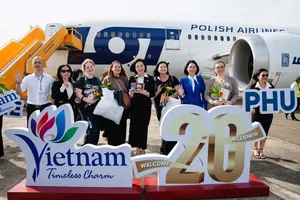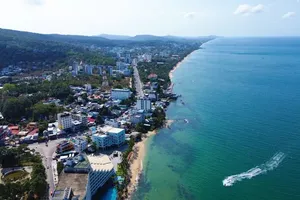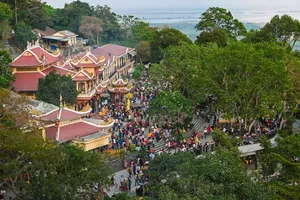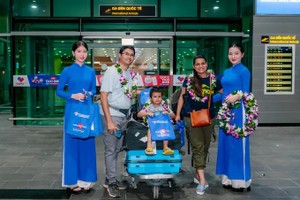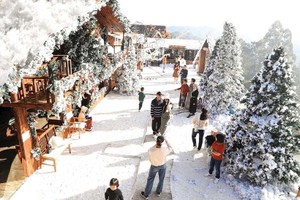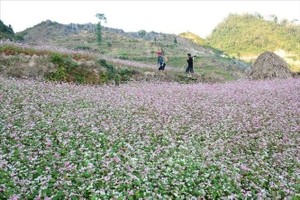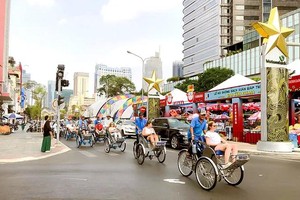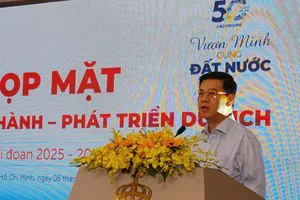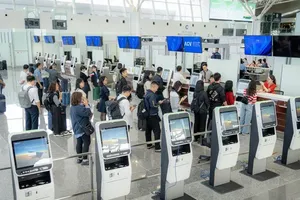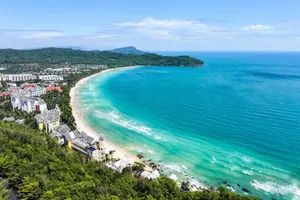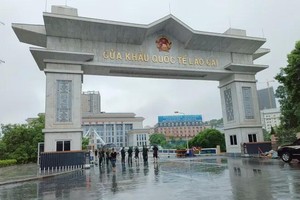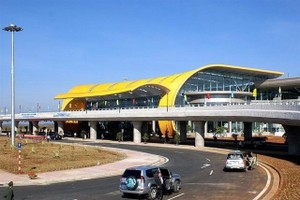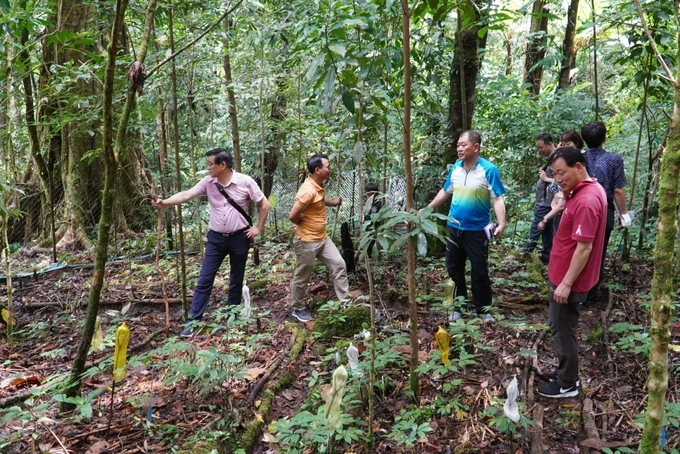
Nam Tra My District and Le Thuy District in Quang Nam Province are considered the capital of Ngoc Linh ginseng. Deep inside Dong Chau – Khe Nuoc Trong jungle, the growing area for this ginseng is in a nature reserve of over 22,000ha.
The districts are now running several sight-seeing tours to ginseng growing areas, bringing consider financial benefits to farmers here. Sitting comfortably under the canopy of the forest to grow Ngoc Linh ginseng, tourists eagerly listen to senior locals sharing useful remedies with this precious ginseng.
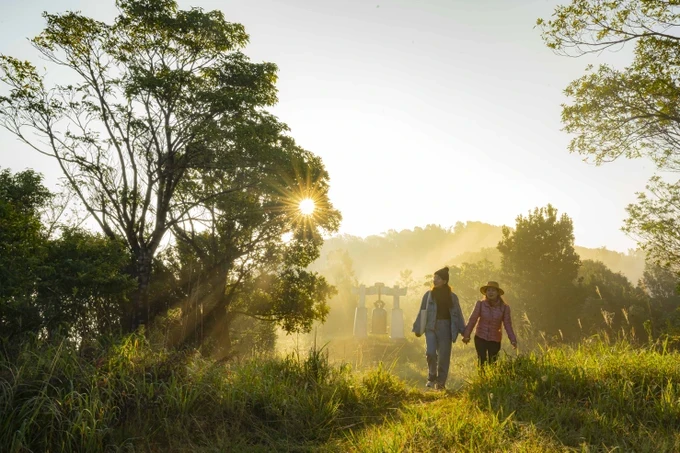
Formerly, strangers were forbidden by the Bru Van Kieu people to approach ginseng growing places. However, since 2020, many households have been more willing to participate in the tourism scheme, and have turned their houses into homestay under the guidance of travel agencies to welcome visitors. Ho Thi Son and Ho Thi Minh are the proud owners of two such homestay places. While holidaymakers are exploring Dong Chau – Khe Nuoc Trong jungle, these two hosts are cooking meals from local food to serve their customers.
Another attractive tourism destination is Pu Luong Nature Reserve in Thanh Hoa Province. Many have chosen this location thanks to its permanently cool weather of around 18-22°C, along with magnificent jungle, and artistic terraced fields, palm hills. The homestays provided by the Thai people are harmoniously sited at the mountain foot.
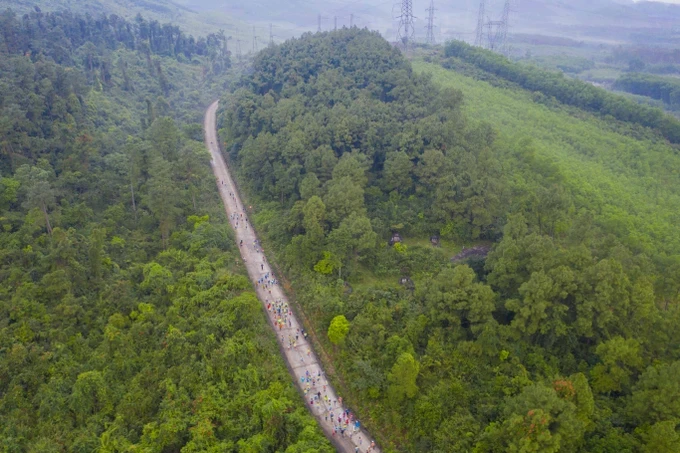
Tourism activities have helped local inhabitants realize the sustainable economic benefits from forest, not coming from chopping down trees but from nurturing and protecting them. Thao A Thang, a local in Hieu Hamlet of Co Lung Town in Ba Thuoc District of the province, shared that his whole hamlet lovingly calls Pu Luong Nature Reserve ‘the forest of hope’ thanks to its financial values to help local families raise their living standards.
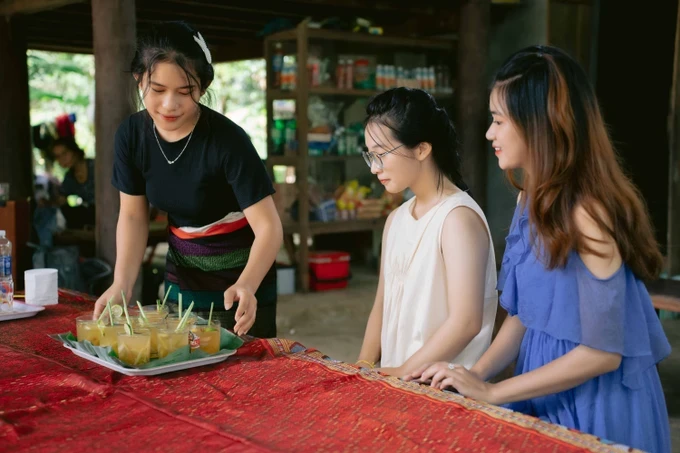
Ho Thi Son enthusiastically said that residents near the forest can both promote local specialties (wild chickens, valuable herbs) to tourists and earn money from those cuisines, making them more prosperous. They can even develop other tourism-related services, whereas travel agencies are now more confident to organize exploration tours with the cooperation of those local people.
Thao A Thang happily informed that when more tourists visit Pu Luong Nature Reserve, members in his hamlet have more jobs to do to earn money. They catch wild fish in streams to serve holidaymakers, and some are worth VND500,000 (US$20) per kilo, which is a considerable sum here.
With an increasing number of tourists coming to forests along the Truong Son Range, there should be suitable policies to become a legal corridor for forest economy to help millions of ethnic people earn their living stably.
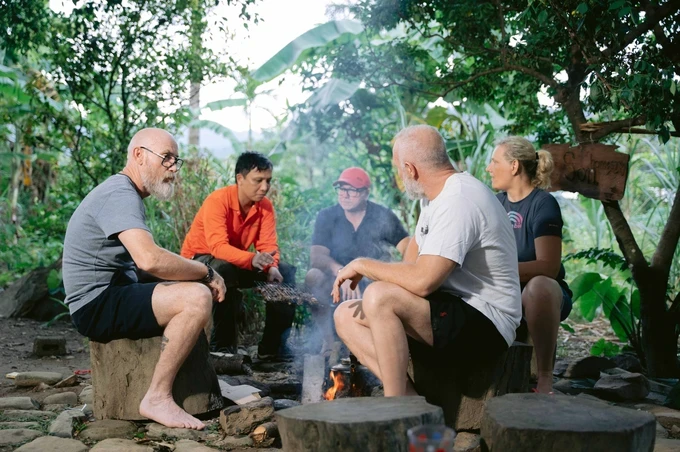
Vice Chairman Lo Van Thang of the People’s Committee of Ba Thuoc District stated that the People’s Committee of Thanh Hoa Province has greenlighted the project ‘Developing eco-tourism, relaxation tourism, and corresponding entertainment activities inside special-use forests in Pu Luong Nature Reserve until 2030, with a vision to 2045’. The project has an allocation of VND183 billion ($7.38 million).
The goal of this project is to welcome 15.800 tourists by 2025, 30 percent of whom are foreigners; and to serve 27,000 tourists by 2030, 35 of whom come from other nations so that tourism is the main revenue source of the locality, which helps to re-invest in Pu Luong Nature Reserve easily. To do that, it is necessary to exploit valuable knowledge of local inhabitants about living in the wild and protecting forests.
Secretary Nguyen Hoai Nam of the Party Committee of Tuyen Hoa District (Quang Binh Province) confidently said that in 2023, the province discovers another 5 beautiful caves in Lam Hoa Commune. The local authorities have developed strategic planning for the stunning landscapes here to boost tourism activities in the future.

Standing Vice Chairman Doan Ngoc Lam of the People’s Committee of Quang Binh Province said that his province has already finished the systematic planning of Phong Nha – Ke Bang National Park to turn this world natural heritage into an adventure tourism center of Asia. This helps to attract more foreign tourists, and thus provides more jobs for local inhabitants for a more stable life. It would be an ideal method to preserve this valuable heritage forest.
Similarly, the People’s Committee of Nghe An Province has recently released its ‘Environment Management and Protection Plan for the World Biosphere Reserve in the West of the Province in the 2023-2027 Period, with an Orientation to 2030’. This plan aims at preserving as well as promoting cultural values in the area and fostering visitor-friendly tourism in the ethnic minority community.

